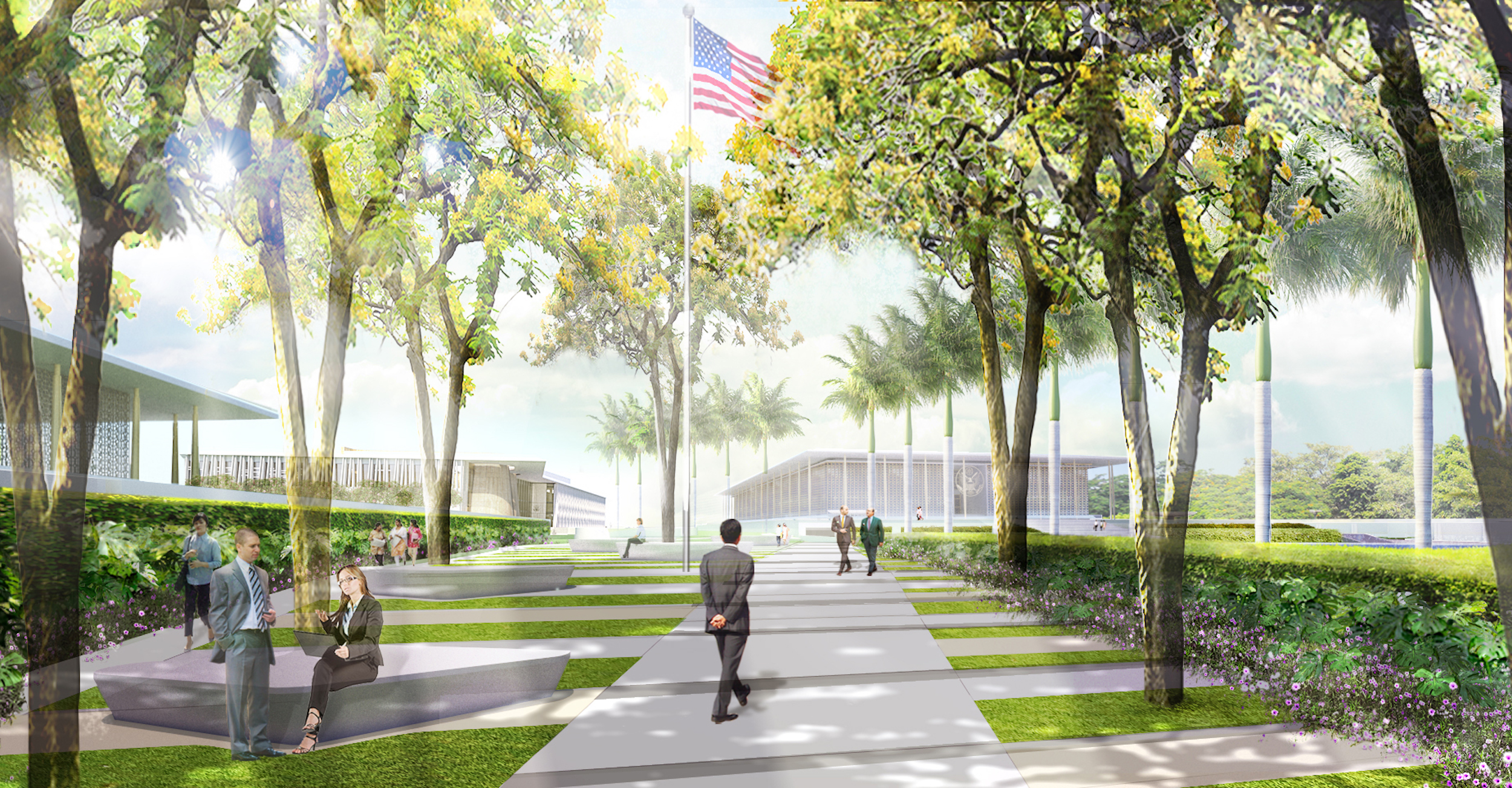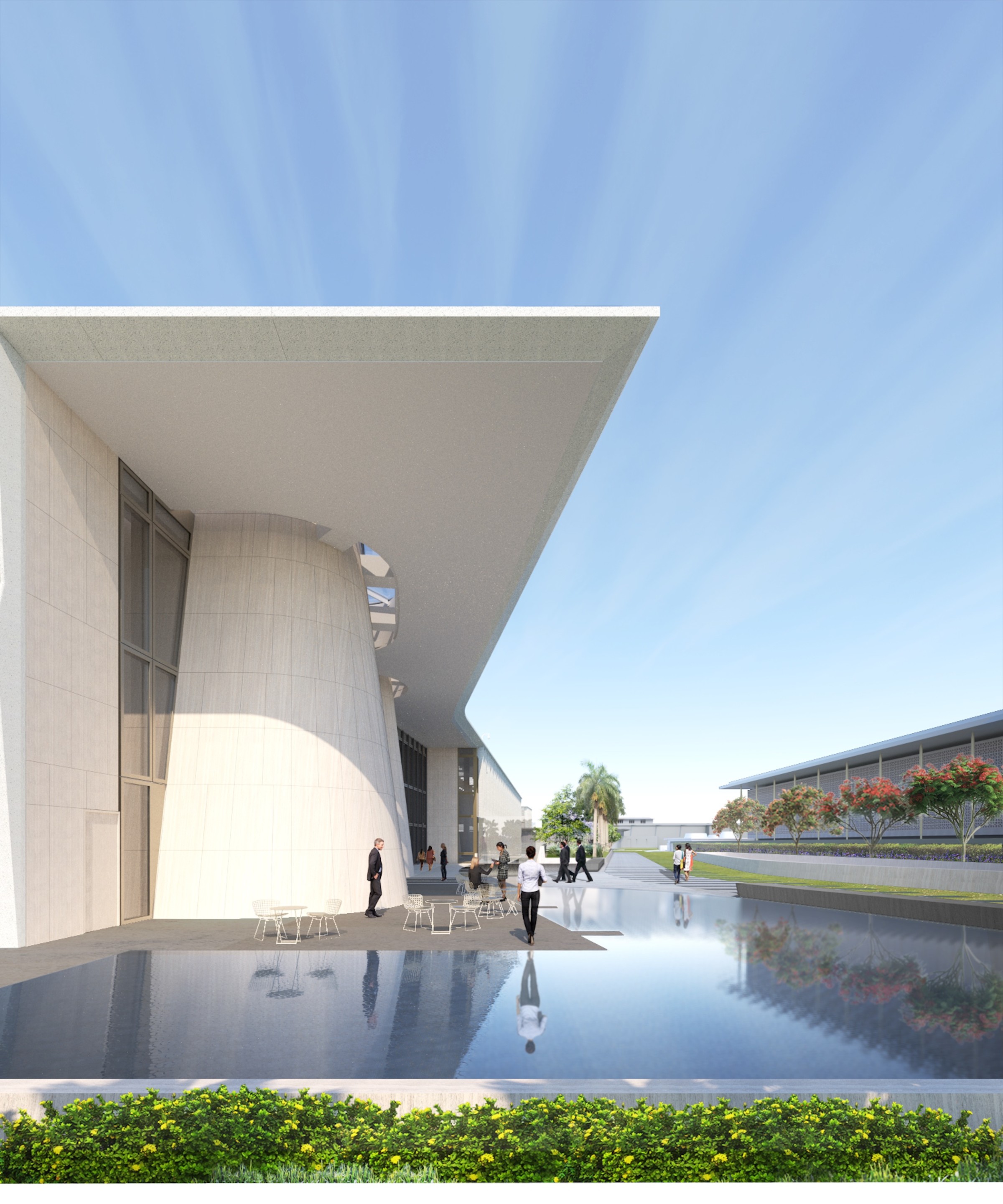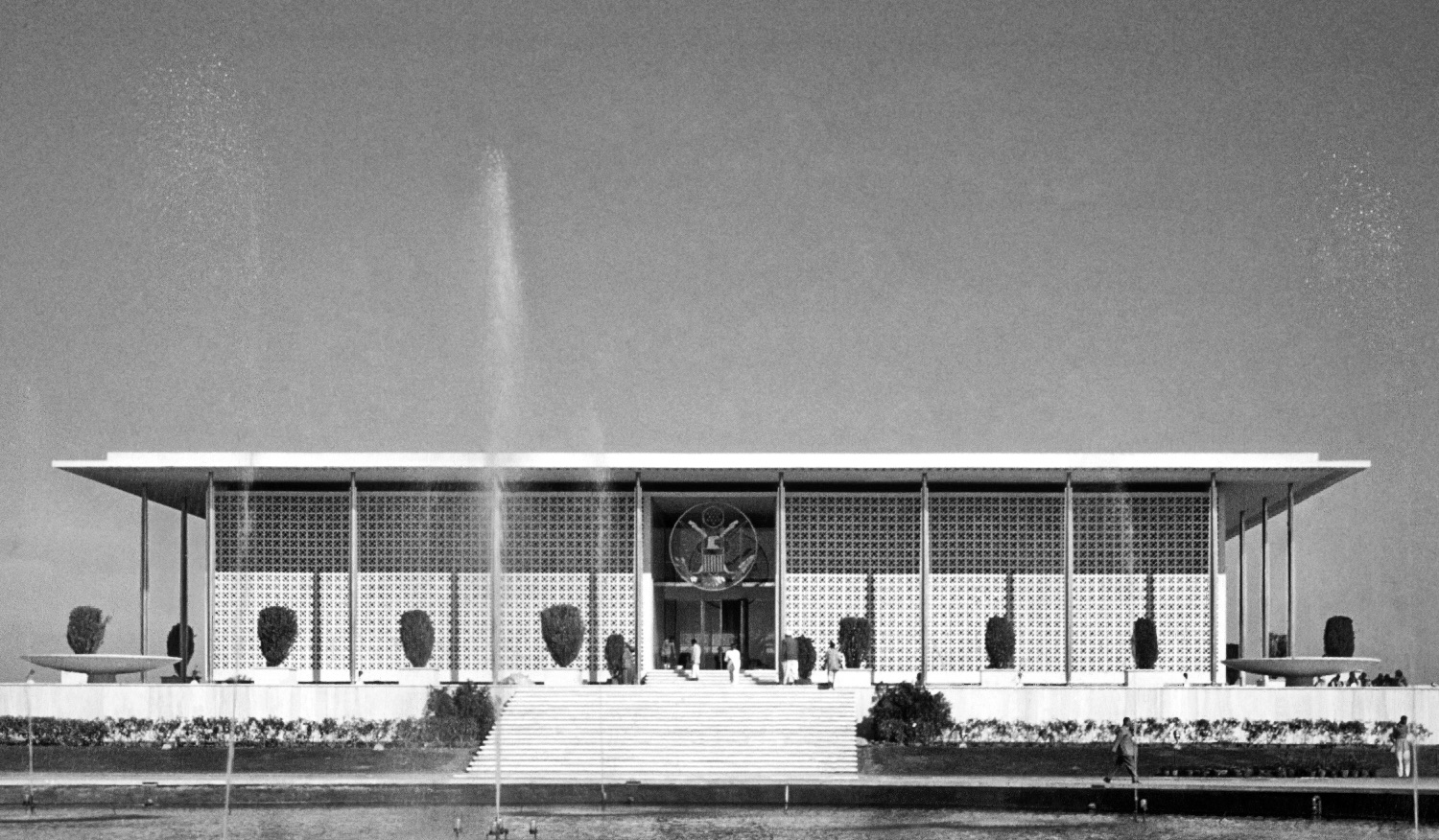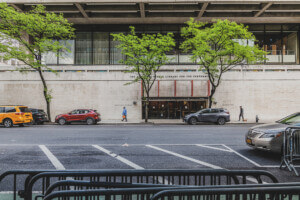An expansive, multi-phase restoration and modernization project at the Embassy of the United States in New Delhi, India, is now officially underway after a formal groundbreaking ceremony. With a master plan developed by WEISS/MANFREDI, the much-anticipated redesign—first unveiled last February—seeks to both preserve and breathe new life into the Edward Durell Stone-designed embassy compound in New Delhi’s Chanakyapuri diplomatic enclave. New York-based WEISS/MANFREDI was selected to head the design of the embassy revamp by the Bureau of Overseas Buildings Operations (OBO), an agency of the U.S. Department of State, back in 2015.
Debuting in 1959 as the first major overseas embassy to be approved during the Eisenhower administration according to Docomomo US, the 28-acre complex includes Stone’s Chancery building, a boxy modernist icon that Frank Lloyd Wright famously heralded as “one of the finest buildings of the past 100 years.” Ellsworth Bunker, U.S. Ambassador to India at the time, was equally as generous with praise for Stone’s embassy, which was roundly heralded for its marriage of Western forms with South Asian architectural influences, at its opening. “To me this building is symbolic of what can be achieved through the cooperation of our two countries,” said Bunker. “From beginning to end it has been a joint venture.”

Six decades later, the U.S. Embassy in New Delhi, like many modernist landmarks of the mid-20th century, has started to show signs of age. The Chancery, to be restored during the second phase of the master plan, will be joined by a new office building, support annex, and an updated landscape complete with a tree-lined promenade that will link the campus’s new and existing buildings while forming “reciprocal relationships between buildings and gardens.” As noted by WEISS/MANFREDI in a press statement, the refreshed landscape reverently nods to the Indian tradition of melding buildings with landscape and will feature a series of reflecting pools, garden walls, canopies, and cast stone screens that “introduce a resilient, integrated design language.”


“Our goal is to create an open, unified campus that is safe and secure,” elaborated Marion Weiss and Michael Manfredi in a statement. “To do that, we drew upon traditional Indian garden elements such as walls, screens, moats, and reflecting pools that provide not only a level of security but also a connection to the great legacy of Indian architecture. The new embassy buildings and gardens reference Edward Durell Stone’s historic chancery, introduce a resilient design language and transform the campus to meet the needs of twenty-first-century diplomacy.”
In addition to an emphasis on landscape, art will play a big role on the invigorated U.S. embassy campus. A selection of works by Indian and U.S. artists curated by the Office of Art in Embassies will be on display in prominent locales including a glass installation by American artist Spencer Finch installed below the entry skylight of the new office building, and a site-specific work by Indian artist Bharti Kher that will be integrated into the marble flooring of the consular area.

Today’s groundbreaking ceremony—held on the 62nd anniversary of the groundbreaking of the original chancery—was attended by Hardeep Singh Puri, India’s Minister of State for Housing and Urban Affairs, Delhi Chief Minister Arvind Kejriwa, and outgoing U.S. Ambassador to Indian Kenneth I. Juster, who remarked: “This design defines a new foundation and sustainable vision for diplomacy, while drawing from the architectural traditions of both countries.” All elements of the project, both new construction and restoration work, are expected to be completed by the fall of 2027 with the new buildings and landscape preceding the restored Chancery.
More details can be found in this seven-minute informative video released by the OBO and featuring insight from Juster, Weiss, and Manfredi.











